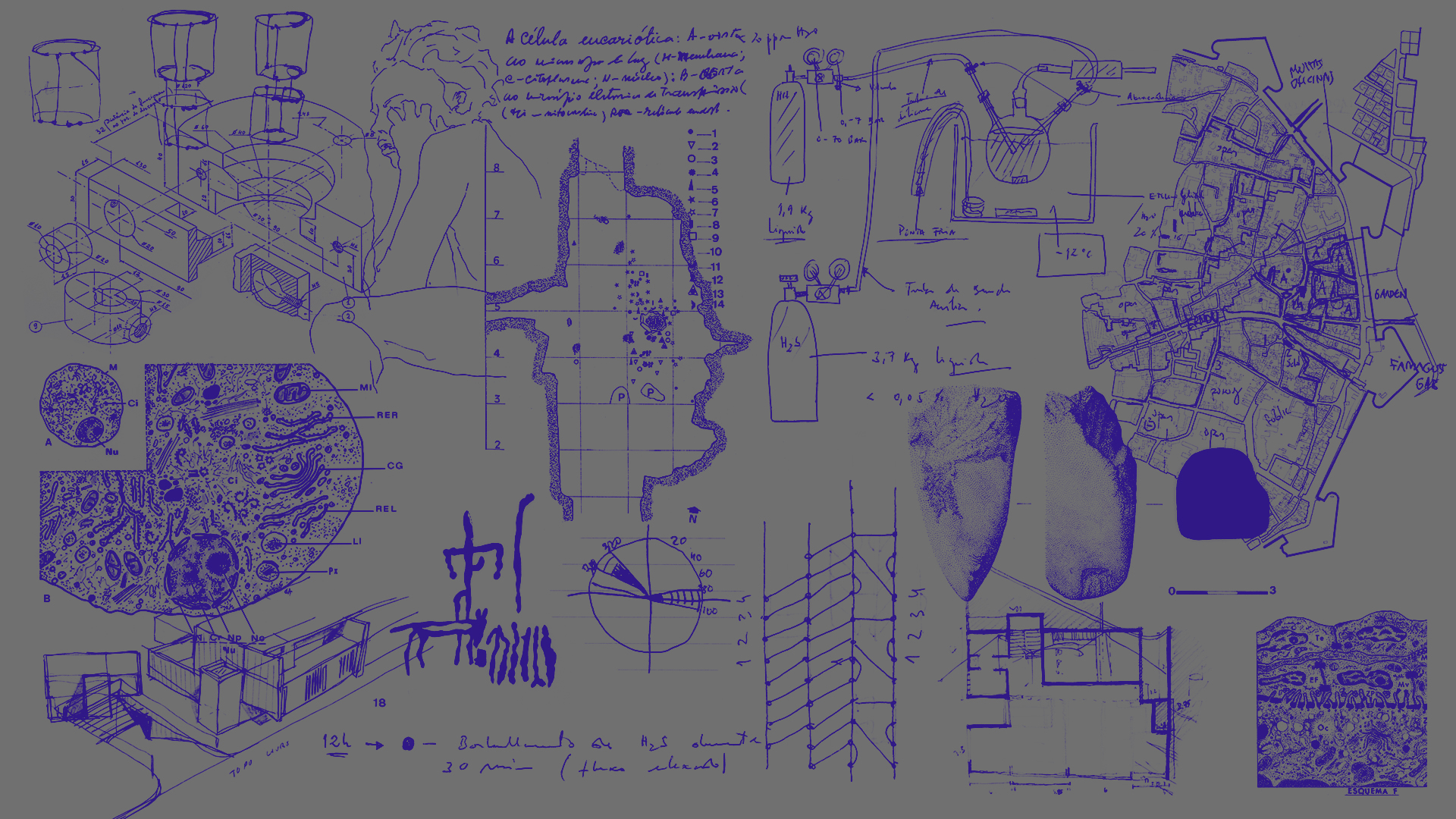DRAWinU
Drawing Across University Borders
Research project | FCT/ICDT
Drawing Across Disciplines- Referência
- PTDC/ART-OUT/3560/2021
- Financiamento
- € 232.473,86
- Período
- 10.15.2021 — 10.14.2025
- Site do projeto
- https://drawinu.fba.up.pt/

The project DRAWinU (DOI 10.54499/PTDC/ART-OUT/3560/2021) aims to undertake a longitudinal study on the relationship of students and researchers with drawing within the University to develop new learning strategies and research skills based on drawing activities in Higher Education. DRAWinU is focused on the learning impact, the promotion of creative thinking, visual-spatial reasoning, project methodology and the dissemination of knowledge through drawing. The frame for this study is the research units and classrooms of the Faculties of the University of Porto (UP). UP provides a learning and research context where drawing can be addressed in a common framework in which Science, Technology, Engineering, Mathematics (STEM) and Art coexist: by confronting its differences, we can also find its common ground.
It is generally accepted that drawing practice creates shared circuits between active perception, cognition and creativity, thus, playing a constitutive role in the production of knowledge. In recent years, there has been an increasing proliferation of drawing-based research developing new approaches to integrate drawing within the curriculum of University training, as a means of enhancing general literacy, assisting decision-making processes and promoting observational strategies through notation, within STEM areas. This trend accompanies a growing awareness of the impact of drawing and art practices in the educational turn of STEM areas, complementing the knowledge acquired by other visual, numeric or textual means.
However, there is no longitudinal study on the impact of drawing in the context of the Portuguese University that addresses the various perspectives underlying the use of drawing by artists, researchers and students outside the creative areas to which it is usually associated. This lack of research has resulted in uncertainty regarding the approaches that may be most effective in the development of drawing-based methods applied to research and training.
The group is composed of artists, researchers and professors in drawing fields. Their common goal is the development of drawing-based strategies for research in art and science, seeking to overcome the barriers that define the two cultures within the University. It is supported by a network of consultants in the key areas of study.
The project is organized in three main interrelated parts:
1. The first part is the surveying and documentation of drawing activities used in learning and research at theUniversity. It is based on observation in classrooms and research units, and in the recording of interviews, resulting in a selection of data in collaboration with the actors of STEM areas.
This survey is closely linked to the perception with which informants consider their drawing experience in relation to the content of knowledge. The key areas are the Faculty of Sports (FADEUP), the Departments of Mechanics and Civil Engineering (FEUP), Natural Sciences and Mathematics (FCUP), the areas of Microbiology and Biochemistry (ICBAS),Archaeology, Cartography and Geography (FLUP) and Health Sciences (I3S).
2. The second part is focused on practice-based research carried out by artists-researchers within the project. Its purpose is to confront the conjectural space of art and science through drawing and address the speculative means of these ways of knowing in an experiential way. Two purposes drive this component:
– Creation of Collective Drawing Labs based on the visual-spatial and causal content of STEM areas, to develop new reflexive approaches to address learning outcomes through drawing activities;
– Development of drawing research activities between Art and STEM. Whether using scientific methods or the epistemology of science, or because the researched phenomena are not restricted to a specific scientific discipline, drawing between Art and STEM (STEAM) can generate new modes of research to further art practices that offers new methods back to STEM processes.
3. The third part aims to understand the reasoning and communicative processes underlying drawing’s approach to visual-spatial and causal content in STEM areas in UP. Using a backward design approach, we will analyze how drawing conveys complex knowledge and generate an active engagement with scientific content. This approach is framed by practice-based research, visual participatory methodology, psychology of perception and gestural studies.
As a participatory visual methodology, drawing encourages a collaborative meaning-making where the drawers’ context is revealed by what is drawn, how it is drawn and what drawing stands for in a scientific milieu. The horizon of this phase is the dissemination of knowledge regarding drawing as an epistemic visual representation intertwined with other nonreproducible systems of knowledge such as gestures, oral explanations of physical demonstrations.
- Institutions
Instituto de Investigação em Arte, Design e Sociedade (i2ADS), FBAUP (Coordenação)
Centro de Matemática da Universidade do Porto (CMUP)
Instituto de Investigação e Inovação em Saúde da Universidade do Porto (i3S)
Principal Investigator
Mário Bismarck
Co-Principal Investigator
Paulo Luís Almeida
Team
Cláudia Amandi (i2ADS/FBAUP), Flávia Costa (i2ADS/FBAUP), Joaquim Marques (i2ADS/FBAUP), Maria Manuela Lopes (i3S; P.Porto), Maria Helena Matos (CMUP/FCUP), Marina Guedes (Junior researcher), Pedro Silva (i2ADS/FBAUP), Sílvia Simões (i2ADS/FBAUP), Vasco Cardoso (i2ADS/FBAUP), Vítor Silva (i2ADS/FAUP)
Scholarship holder
Maria Catarina Silva (Research Initiation Grant FCT)
Resultados do projeto DRAWinU
Edited book
Cardoso, Vasco, Mário Gonçalves Fernandes and Carlos Rodrigues (Eds.). (2021). Representações, Desenhos e Imagens do Território. i2ADS, CEGOT and CITTA.
Reports
Progress Report, Year 1 — October 2021 – December 2022. PTDC/ART-OUT/3560/2021.
Progress Report, Year 2 — January 2023 – October 2023. PTDC/ART-OUT/3560/2021.